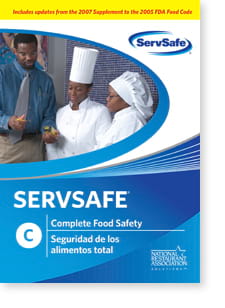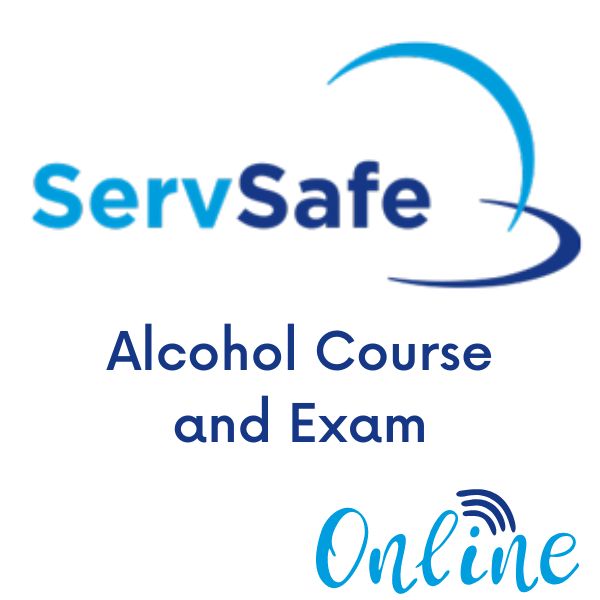Comprehending the Function of a ServSafe Food Handler in Ensuring Food Safety Specifications
Comprehending the Function of a ServSafe Food Handler in Ensuring Food Safety Specifications
Blog Article
Comprehensive Food Handlers Training for Health and Safety And Security
In today's rapidly developing food service landscape, thorough food trainers training has become a vital element for guaranteeing hygiene and safety. By instilling important practices associated with hand hygiene, food storage space, and cleanliness, this training not just minimizes the threat of foodborne illnesses yet additionally reinforces conformity with regulative criteria. The ramifications of such training expand past mere compliance; they discuss public health and consumer depend on. The performance of these training programs can vary significantly. What aspects absolutely determine their success in cultivating a society of security?
Importance of Food Safety Training

In addition, food security training helps to guarantee that staff members recognize current policies and guidelines, which are necessary for preserving functional licenses and preventing pricey penalties. Normal training sessions also work as a platform for reinforcing ideal practices, thereby reducing the possibility of human error, which commonly acts as a leading root cause of food contamination.
In addition, buying food safety and security training can boost a facility's reputation, as clients progressively prioritize dining experiences that show high security criteria. Such positive steps not just protect customers but likewise add to the long-term success of food businesses. In recap, thorough food safety and security training is an essential component of food service operations, straight impacting both public wellness and business sustainability.
Trick Concepts of Hygiene
Preserving high criteria of health is crucial in any kind of food taking care of atmosphere to stop contamination and make certain the security of consumers. The vital concepts of hygiene include a number of vital methods that food handlers should consistently apply.
First, hand hygiene is critical; food handlers should wash their hands completely with soap and water before and after managing food, in addition to after making use of the toilet or touching any type of possibly polluted surfaces. Secondly, tools and surfaces need to be regularly cleaned up and disinfected to remove pathogens. This includes utensils, cutting boards, and kitchen counters, which need to be kept in a clean condition.


Proper food storage is also crucial; raw foods ought to be stored separately from cooked or ready-to-eat items to stay clear of cross-contamination. servsafe. Additionally, keeping suitable temperature level controls is essential; perishable things must be maintained safe temperatures to inhibit microbial growth
Finally, individual hygiene can not be ignored. Food handlers ought to wear tidy clothes, usage hair restraints, and avoid functioning when ill. By sticking to these essential concepts of hygiene, food trainers can substantially decrease the danger of foodborne health problems and promote a safer dining experience for all consumers.
Common Foodborne Health Problems
Although numerous foodborne ailments can be avoided through proper hygiene and safe food taking care of practices, they continue to be a considerable public health and wellness concern. Foodborne microorganisms can lead to a variety of health problems, ranging from moderate intestinal distress to extreme complications and even fatality.
Typical foodborne diseases consist of salmonellosis, caused by Salmonella germs, usually connected to undercooked fowl and eggs. An additional prevalent ailment is listeriosis, connected with raw milk items and ready-to-eat meats, which can be especially hazardous for expecting females and immunocompromised individuals. Norovirus, regularly contracted from contaminated food or surface areas, is understood for its quick spread and ability to cause episodes in public settings.
Escherichia coli (E. coli) infection, notably related to undercooked ground beef and contaminated fruit and vegetables, can result in severe abdominal cramps and kidney failure sometimes. Additionally, Clostridium perfringens, commonly located in large amounts of food that are improperly saved, can trigger food poisoning with signs showing up shortly after usage.
Recognizing these illnesses is essential for food trainers, as awareness can considerably minimize the threat of contamination and shield public wellness. Correct education and training are vital elements in combating my review here foodborne diseases.
Finest Practices for Food Handling
Efficient food taking care of methods are crucial in protecting against the spread of foodborne illnesses. Firstly, correct hand health is vital; food handlers should clean their hands extensively with soap and water before and after taking care of food, especially raw meat or poultry - servsafe. This simple activity dramatically decreases the risk of cross-contamination
Secondly, preserving suitable food storage space temperature levels is essential. Disposable items must be stored at or listed below 40 ° F(4 ° C) to hinder microbial growth. Additionally, prepared foods need to be maintained above 140 ° F(60 ° C) till offered.
Third, guaranteeing tidiness of surface areas and devices is essential. Regularly sterilize kitchen counters, cutting boards, and tools, specifically after preparing raw foods. Usage separate cutting boards for raw and ready-to-eat foods to even more reduce contamination risks.
Moreover, when preparing food, it is essential to comply with the concept of "first in, first out" (FIFO) to take care of supply properly and lower wasting. Finally, always check out and stick to find out here food labels for secure cooking temperature levels and handling directions. By carrying out these finest practices, food handlers can considerably enhance food security and shield public wellness.
Implementing a Safety And Security Culture
Developing a safety culture within a food handling setting is crucial for fostering a commitment to food safety among all personnel. This culture highlights the importance of food security as a shared obligation, urging employees to prioritize health methods continually.
To apply a safety and security culture, companies must start by giving extensive training that resolves food handling methods, prospective threats, and the importance of individual health. Educating sessions ought to be interactive and tailored to the details duties of staff participants, making sure relevance and engagement.
In addition, management plays a vital function in establishing this culture. Monitoring needs to design risk-free techniques and interact the value of food security regularly. Recognizing and rewarding workers that promote safety standards can even more strengthen these behaviors.
In addition, open communication channels should be established, enabling team to report security problems without anxiety of repercussion. Normal safety and security audits and responses sessions can assist determine areas for enhancement and reinforce responsibility.
Eventually, growing a safety and security society not only enhances conformity with food security laws however likewise safeguards public health and wellness, cultivates worker morale, and adds to the general success of the food dealing with establishment.
Conclusion
In verdict, extensive food trainers training plays a pivotal function in advertising health and security within food solution establishments. By furnishing workers with crucial understanding concerning food safety concepts, common foodborne ailments, and ideal methods for dealing with food, such training dramatically minimizes wellness risks. Promoting a society of security boosts the facility's credibility and aligns with customer expectations for high safety and security standards, eventually adding to resource public health protection and the overall success of the food service industry.
In today's quickly advancing food solution landscape, extensive food handlers training has emerged as an important component for making certain health and safety.Food safety training is critical for preserving high standards in food handling and prep work, with studies showing that appropriate training can decrease foodborne ailments by up to 30%. In summary, thorough food security training is an important component of food service procedures, directly influencing both public wellness and business sustainability.

Report this page